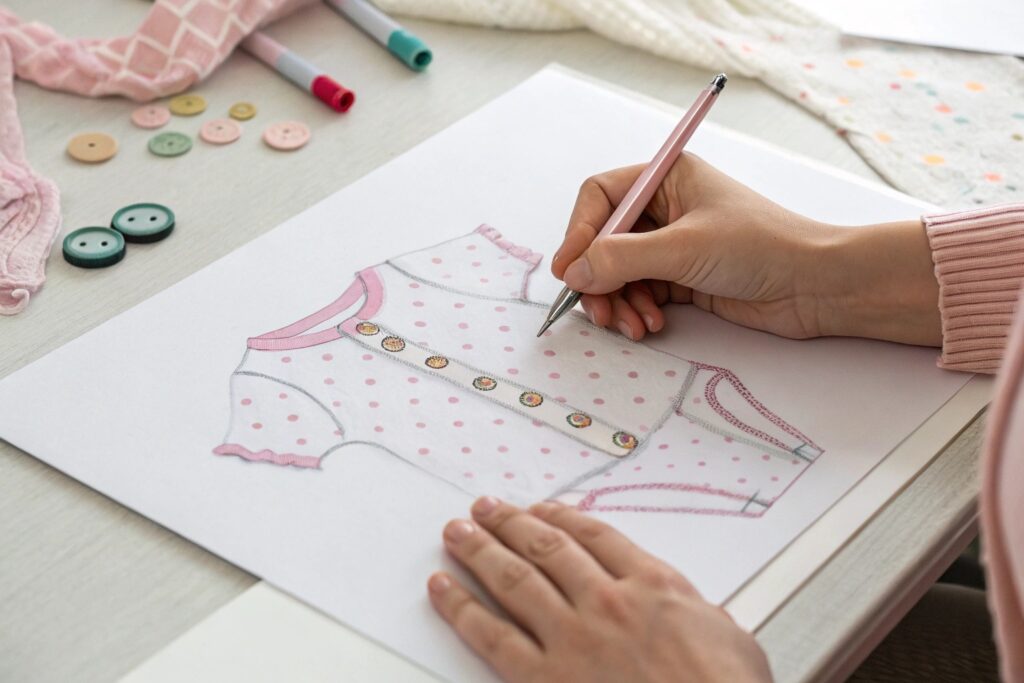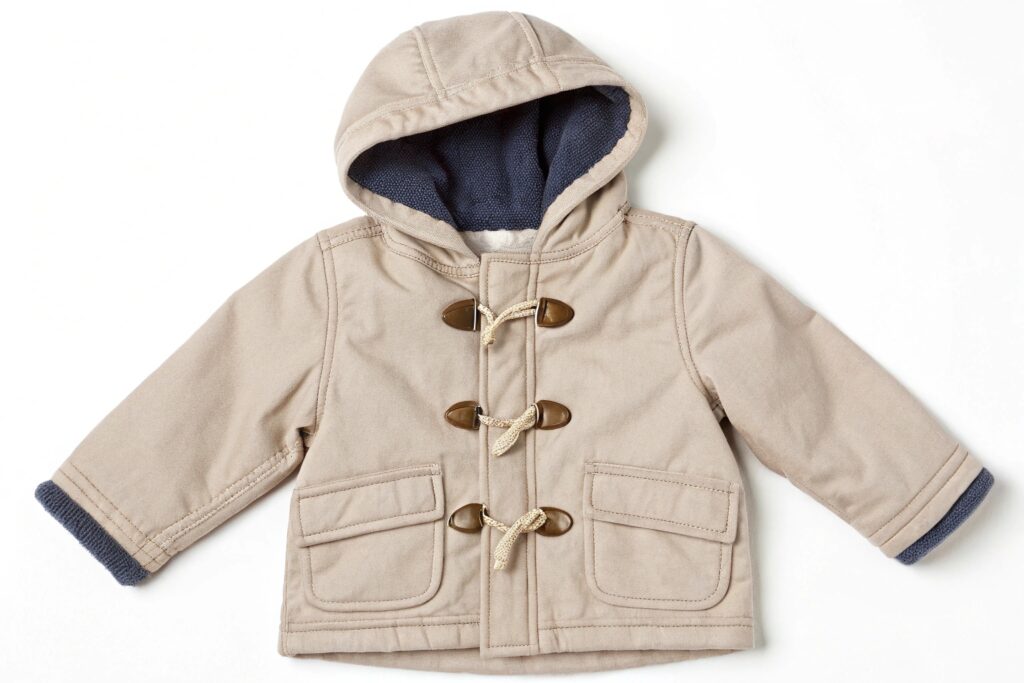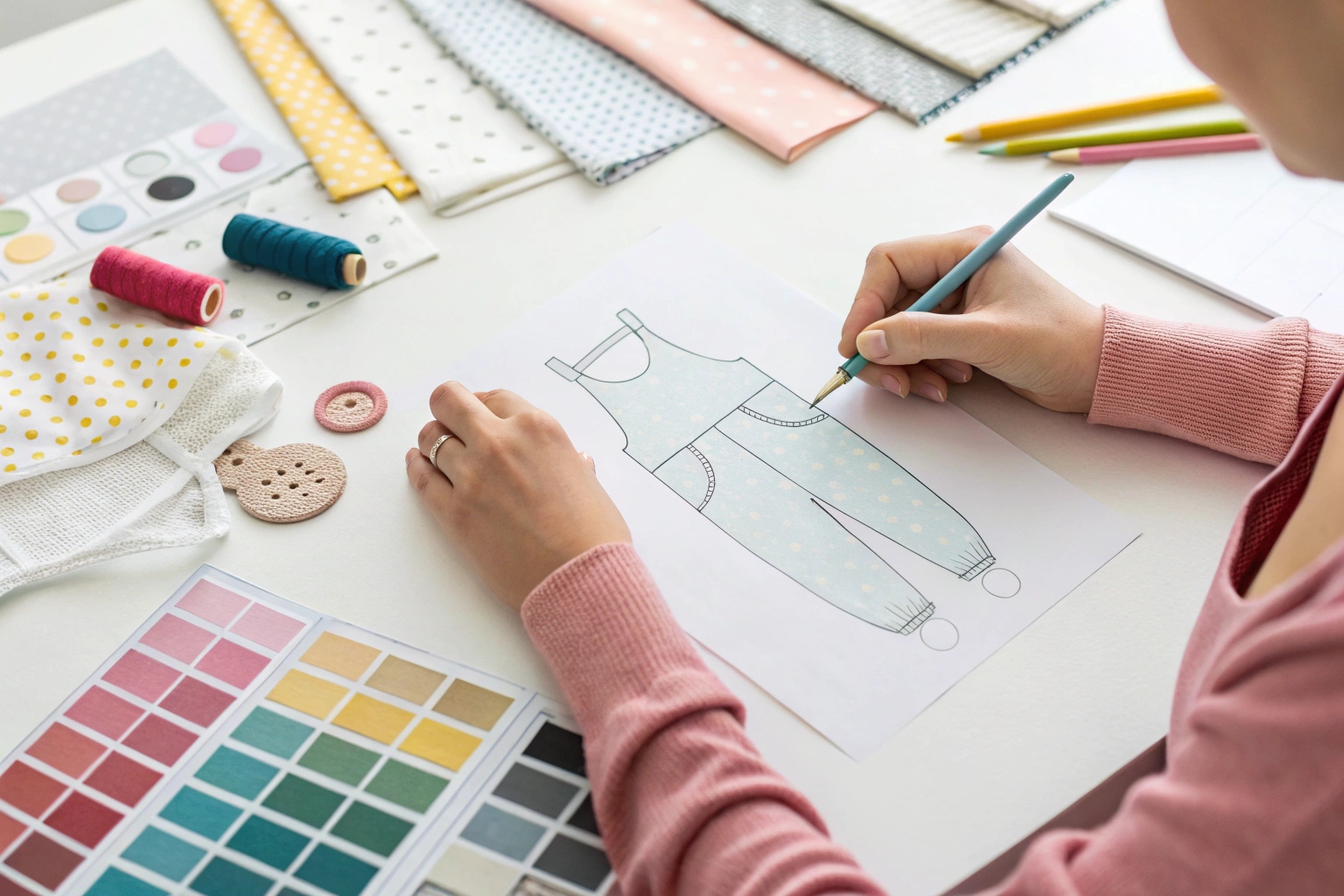Turning babywear sketches into sellable products is a rewarding but intricate process. Many designers focus solely on creating sketches, but translating those ideas into products that will succeed in the market requires expertise. In this article, I’ll walk you through the steps we follow at Fumao Clothing to transform a babywear design from a mere idea into a finished product ready for sale.
Turning babywear sketches into products involves several key steps, including sketching, material selection, prototyping, and testing. The right process can ensure the product meets market demands and is produced at scale while keeping costs in check.
But what does it really take to make sure your babywear sketches can become products that are not only adorable but also commercially viable? Let’s dive in and explore how we do it.
The Step-by-Step Process of Turning Babywear Designs into Products
Turning a simple sketch into a finished babywear product involves several important steps. From initial design to production, each stage requires careful attention to detail to ensure the product is both high quality and market-ready.
How do we go from sketch to finished product in babywear?
The journey begins with the idea—a design in a sketchbook. But translating that design into a marketable product is a far more detailed process. We break it down into the following steps:
-
Design and Sketching
The first step is, of course, the design. This is where the babywear concept is born. The design is finalized in a sketch format, showcasing all the intricate details such as patterns, fabrics, colors, and special features like snaps or buttons. -
Material Selection
After the design is locked, the next step is choosing the right materials. This involves selecting fabrics that are both safe for babies and meet quality standards. For example, cotton is often the preferred fabric due to its softness, breathability, and hypoallergenic properties. -
Pattern Making
This step involves taking the design sketch and converting it into a pattern—a template that serves as the blueprint for the actual garment. Patterns are made by either hand-drawing or using computer-aided design (CAD) tools to create accurate measurements. -
Prototyping
Once the pattern is created, we move on to prototyping. The first prototype is usually made using cheaper fabric to test the fit, functionality, and appearance. This is a crucial phase where adjustments are made, and any errors in the design can be addressed before mass production begins. -
Fitting and Testing
After the prototype is created, we move to fitting. This ensures the design looks as intended when worn. Testing also ensures comfort, practicality, and durability—qualities that are critical when making babywear. -
Final Production
Once everything is approved, we move to the final production phase. This involves mass-producing the garments, applying the branding, and ensuring everything meets the quality standards. The finished products are then packaged and prepared for shipping.

Why is the prototyping stage so important in the babywear process?
Prototyping is the stage where we can truly refine the design. It’s an opportunity to test how the garment fits, moves, and holds up under various conditions. In babywear, comfort is a top priority, so this phase allows us to ensure the clothes will be gentle on babies’ skin and easy to put on and take off.
How to Ensure Your Babywear Sketches Meet Market Demands
When designing babywear, it’s not just about creating something cute. The designs must also meet market demands to be commercially viable. Here’s how we ensure that our babywear sketches are in line with what parents and retailers are looking for.
What features do babywear designs need to meet market expectations?
Meeting market demands starts with understanding what customers want. Trends, safety, and practicality play a big role in shaping a product’s success.
-
Trend Awareness
One of the key aspects of designing babywear that sells is staying updated with current trends. Whether it’s organic fabrics or specific color schemes, ensuring that our babywear designs reflect what’s currently trending can help us capture the attention of both retailers and consumers. -
Safety and Comfort
Babywear has to meet safety standards, as parents will never compromise on their child’s well-being. We make sure that our designs are free from harmful chemicals, have safe fastenings, and are made of non-toxic, comfortable materials. -
Functionality
Convenience for parents is just as important as comfort for babies. We design babywear with practical features like easy closures, adjustable straps, and expandable fits that allow for long-term use as babies grow.
How do we conduct market research for babywear designs?
Conducting market research is a crucial step in ensuring our designs meet the demands of the market. We analyze consumer trends, attend trade shows, and study the products of other successful brands. Feedback from customers also helps us fine-tune designs to ensure they appeal to a wide audience.
Tips for Converting Babywear Concepts into Commercial Designs
Taking your babywear concept from the drawing board to production is no easy task. There are several things you need to keep in mind to make sure the designs are both attractive and functional. Here are a few tips.
How can we effectively move from concept to commercial design?
To convert babywear concepts into successful commercial designs, we consider several factors. This includes balancing creativity with practicality and making sure the designs meet industry standards.
-
Prioritize Versatility
Babywear needs to be versatile. While trends come and go, practical, well-designed baby clothes will always be in demand. We ensure our concepts work in different seasons, are easy to care for, and offer value for money. -
Think about Production Costs
While the design should be innovative, it’s equally important to keep production costs in mind. A stunning babywear concept could fall flat if the production costs are too high. We make sure that the materials we use and the processes involved don’t drive up costs unnecessarily.
How do we balance creativity with cost-effective production?
Creativity is essential for designing unique, standout babywear, but so is keeping costs low. We find that by carefully selecting fabrics, using efficient production methods, and being strategic with our designs, we can maintain creativity without blowing the budget. This helps us offer competitive prices while maintaining top quality.

Turning Babywear Ideas into Profitable Products: A Guide for Designers
Turning babywear ideas into profitable products is an exciting challenge. To succeed, designers must focus on both creativity and profitability. Here’s a guide to help ensure your babywear designs are not only imaginative but also lucrative.
How do we ensure profitability in babywear design?
Making a profit requires more than just creating a beautiful design. Designers must consider pricing, demand, and production costs to ensure profitability.
-
Calculate the Right Price Point
One of the first things we do when creating babywear designs is calculate a price point that works for both us and the customer. This involves considering production costs, competitors’ prices, and consumer willingness to pay. -
Consider Economies of Scale
To increase profitability, we focus on optimizing production through economies of scale. This means that the more units we produce, the lower the cost per unit becomes, which helps increase margins and reduce waste.
What role does branding play in making babywear products profitable?
Branding plays a critical role in turning babywear ideas into profitable products. Strong branding helps communicate quality, safety, and trust to customers. At Fumao Clothing, we ensure our babywear designs are consistently branded, which helps foster customer loyalty and higher sales.
Conclusion
Turning babywear sketches into profitable, sellable products is no small feat, but with the right process, materials, and market understanding, it’s entirely possible. Following a step-by-step approach and focusing on both creativity and practicality helps us bring quality babywear to market.










